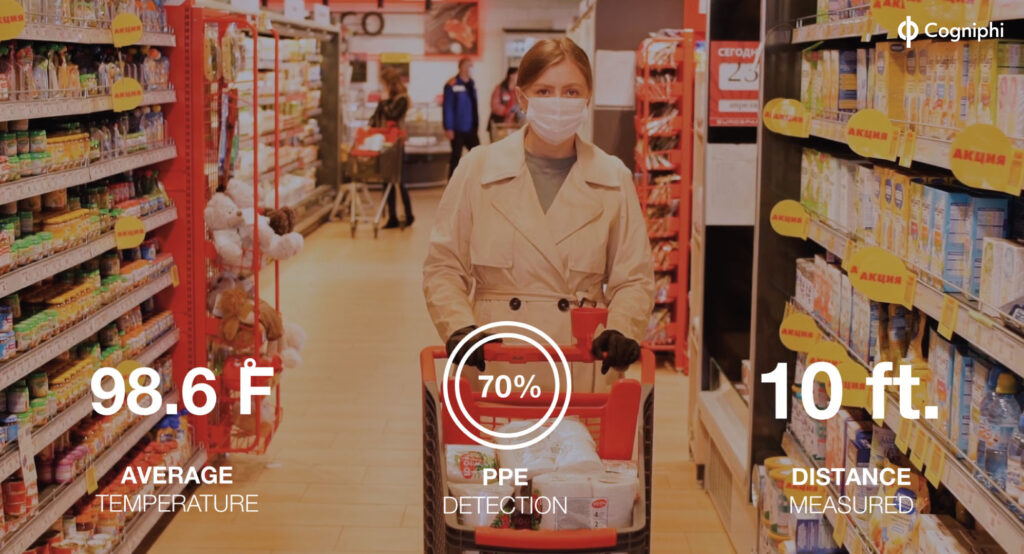Over the past ten years, Artificial Intelligence or AI technology has hurtled towards unimaginable advancements. And even though most people remain unaware of what AI tech such as Computer Vision (CV) or Vision Intelligence entail, chances are that they’ve already used it. AI has ubiquitously entered all our lives; it is helping us to drive smarter, unlock our phones faster, shop better, and soon, it will be a part of almost every aspect of our lives.
What is CV or Vision Intelligence and why will we see more of it in the years to come?
As human beings, we have the amazing ability to sense our surroundings. With the help of our eyesight and cognitive capabilities we can visualize what is around us and make decisions based on what we see. Computers on the other hand, aren’t able to do this automatically. CV or Vision Intelligence is thus a subset of AI that enables computers to see, identify, and interpret visual data as humans would. The process is complex and requires vision algorithms and applications for the computer to learn. However, once the process is complete, computers can see, interpret, and analyse visual data much better and faster than any human ever could. In addition to being more efficient, Vision Intelligence is also an extremely malleable technology. From automobiles to agriculture, Vision AI can be tailored to meet the requirements of all sorts of industries and its uses are wide-ranging. Below are examples of how Vision AI is being customised to help a whole host of industries.

Manufacturing
Vision Intelligence has been a revolutionizing force in the manufacturing space. From smart factory floors to quality control and accident prevention, Vision AI can help with almost every manufacturing process. In a modern factory setup, automated production lines are fitted with multiple moving machines such as conveyor belts and robotics units. For seamless production to continue, none of these systems can afford a breakdown. However, more often than not, stoppages do happen and they hamper production. Here is where Vision AI steps in. Armed with AI-based vision, CCTV cameras can analyse and diagnose every minor defect in a production line and issue real-time updates in case of machine failure or other problems. For example, if a conveyor belt is stuck due to improper material alignment, CV will preemptively flag the issue and notify the shift manager. Or, if a worker is standing too close to a vat of dangerous chemicals, AI-based CV systems can issue a red alert, thereby avoiding an accident. These are just a few examples of how AI has been a game-changer in manufacturing.

Retail
Retail is another sphere in which Vision Intelligence is creating ripples. For too long now, retail stores and supermarkets have faced a host of issues such as inventory mismanagement, revenue loss, and theft. Vision Intelligence has a solution for all of this. With the help of CCTV systems, and cameras placed on shelves and other crucial points, images of products and customers are captured, processed, and analysed to help retailers draw actionable insights. Vision-based tech and Deep Learning algorithms thus help generate insights like the effect of product placement on sales and customer shopping patterns in order to create more effective and personalised shopping experiences. AI Vision-powered cameras can also help to detect theft or incidents of sweethearting which is a form of theft where cashiers or checkout counter employees can give away merchandise to a “sweetheart” customer such as a family member or friend.

Health
In healthcare, Vision AI has the potential to save lives. Technologies like Automated Pathogen Detection combine the power of AI and automation to help test samples of human tissue, sputum etc. in a faster and more accurate manner. Meanwhile, there are several other AI-based tools that are being developed to analyse three-dimensional radiological images – a process that could potentially speed up diagnoses and suggest much-more effective treatments for patients.
The above three industries are just a few of the examples out of a vast pool of sectors that Vision Intelligence is making a splash in. In the years to come, Vision Intelligence or Computer Vision will grow in its reach and capabilities, and more and more industries will realise its multifaceted potential.




